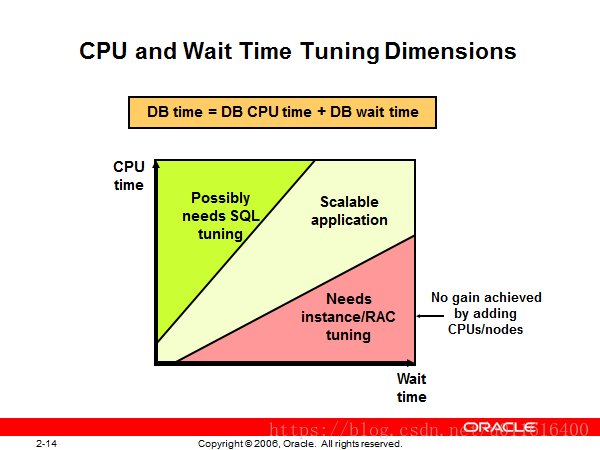
CPU and Wait Time Tuning Dimensions
When tuning your system, it is important that you compare the CPU time with the wait time of your system. By comparing CPU time with wait time, you can determine how much of the response time is spent on useful work and how much on waiting for resources potentially held by other processes. As a general rule, systems where CPU time is dominant usually need less tuning than the ones where wait time is dominant. Alternatively, heavy CPU usage can be caused by badly written SQL statements.Although the proportion of wait time to CPU time always tends to increase as load on the system increases, steep increases in wait time are a sign of contention and must be addressed for good scalability.
When contention is evidenced by increased wait time, adding more CPUs to a node, or nodes to a cluster, would provide very limited benefit. Conversely, a system where the proportion of CPU time does not decrease significantly as load increases can scale better, and would most likely benefit from adding CPUs or Real Application Clusters (RAC) instances if needed.
Note: Automatic Workload Repository (AWR) and Statspack reports display CPU time together with wait time in the Top 5 Event section, if the CPU time portion is among the top five events.
























 1231
1231

 被折叠的 条评论
为什么被折叠?
被折叠的 条评论
为什么被折叠?








